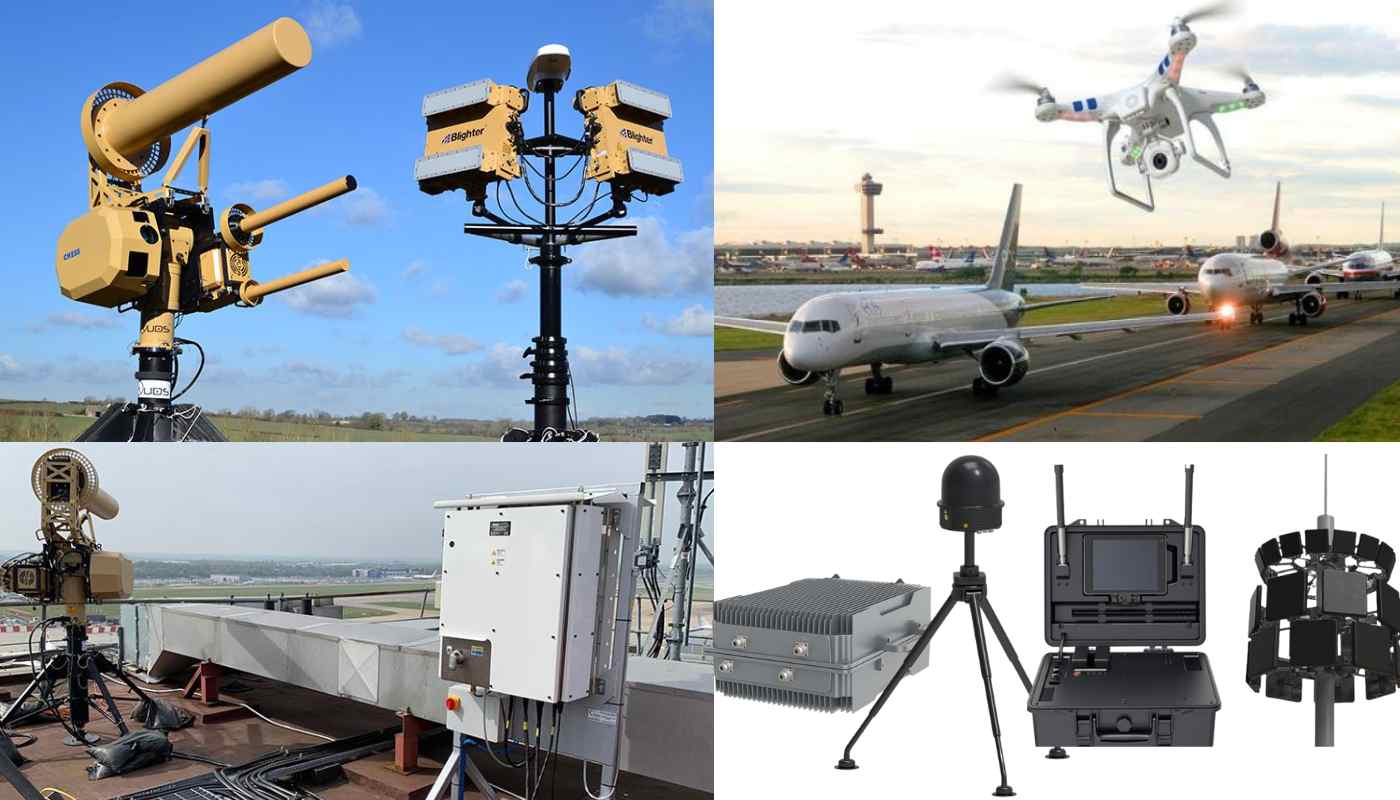Anti Drone System and Counter UAS Detection in USA in 2025
The once-futuristic vision of buzzing drones filling the skies is now a reality. While these unmanned aerial vehicles (UAVs) have revolutionized industries like photography and delivery, their ease of access has also introduced a new layer of security concerns. Drone detection systems and counter-UAS (C-UAS) technology have become crucial tools for safeguarding American airspace, particularly around sensitive areas like airports and critical infrastructure.

Why Do We Need Anti-Drone Systems in the USA?
The rise of drone threats in the USA is a multifaceted issue. Here are some of the driving forces:
- Malicious Intent: Drones in the wrong hands can be used for espionage, disrupting operations at airports and power plants, or even launching attacks.
- Privacy Concerns: The proliferation of personal drones raises concerns about unauthorized surveillance of individuals and private property.
- Accidental Incursions: Hobbyist drone pilots may not be aware of restricted airspace, posing a safety risk to manned aircraft.
Drone mitigation strategies are essential for addressing these concerns and ensuring the safe and secure use of airspace.
A Look at Anti-Drone Technology in the USA
The USA has emerged as a leader in developing and deploying anti-drone technology. Here’s a breakdown of the different approaches used for counter-drone detection and mitigation:
- Drone Detection Systems:
- Radar Detection: These systems use traditional radar technology to identify and track drones within a specific range. They excel at long-range detection but may struggle with smaller drones or differentiating them from birds.
- RF (Radio Frequency) Detection: These systems detect the unique radio signals emitted by drones, providing accurate identification and location data. They work well in urban environments but can be susceptible to interference.
- Electro-Optical Systems: These systems use high-resolution cameras and thermal imaging to visually identify and track drones. They offer detailed information but may be limited by weather conditions or darkness.
- Drone Mitigation Systems:
- Drone Jamming: These systems disrupt the communication link between the drone and its pilot, effectively grounding it. However, jamming technology raises concerns about interfering with other authorized radio frequencies.
- Drone Takeover Systems: These sophisticated systems attempt to take control of the drone’s flight path, forcing it to land safely in a designated area. This approach requires a high degree of accuracy and may not be effective for all drone models.
- Drone Interceptors: These are physical systems, like nets or specially designed drones, that capture or disable intruding drones. While effective, they require precise deployment and may pose safety risks in some scenarios.
Choosing the right anti-drone system depends on the specific needs and environment. Factors like the size of the airspace to be protected, the type of drone threats anticipated, and budget constraints all play a role.
The Rise of American Anti-Drone Manufacturers
The USA boasts a thriving industry dedicated to developing innovative counter UAS solutions. Here are some of the leading American anti-drone manufacturers:
- Dedrone: This Virginia-based company offers a comprehensive C-UAS suite, including radio frequency detection and drone jamming technology.
- L3Harris Technologies: This defense giant provides integrated air defense systems that can detect, track, and defeat drone threats.
- DroneShield: This Florida-based company specializes in portable C-UAS solutions ideal for protecting smaller sites.
- Battelle: This renowned research institution develops cutting-edge drone countermeasures, including anti-drone lasers and radio frequency jamming systems.
These are just a few examples, and the American anti-drone technology landscape is constantly evolving.
Challenges and Considerations
While anti-drone systems offer a powerful defense, there are still challenges to consider:
- Rapidly Evolving Technology: Drone technology is constantly improving, making it crucial for C-UAS systems to keep pace.
- Regulation and Compliance: The use of drone jamming technology is subject to strict regulations in the USA, requiring careful consideration.
- False Alarms: Minimizing false alarms from C-UAS systems is crucial to avoid unnecessary disruptions and maintain operational efficiency.
Integrating C-UAS solutions with existing security infrastructure and protocols is also essential for a holistic approach to airspace security.
FAQs
What are Airport Anti-Drone Systems?
Airport anti-drone systems are a combination of technologies used to detect, track, and neutralize unauthorized drones flying near airports. These systems can include radar, radio frequency detection, and electro-optical systems to identify drones, and jamming or drone takeover systems to take control of them.
Why are Counter-UAS Detection Systems Important for Airports?
Counter-UAS detection systems are crucial for airports to ensure the safety of passengers, crew, and aircraft. Drones pose a significant threat if they collide with airplanes or disrupt critical operations at airports.
What are the Challenges of Using Anti-Drone Systems at Airports?
Some challenges of using anti-drone systems at airports include keeping pace with rapidly evolving drone technology, adhering to regulations on jamming technology, and minimizing false alarms to avoid disruptions.










